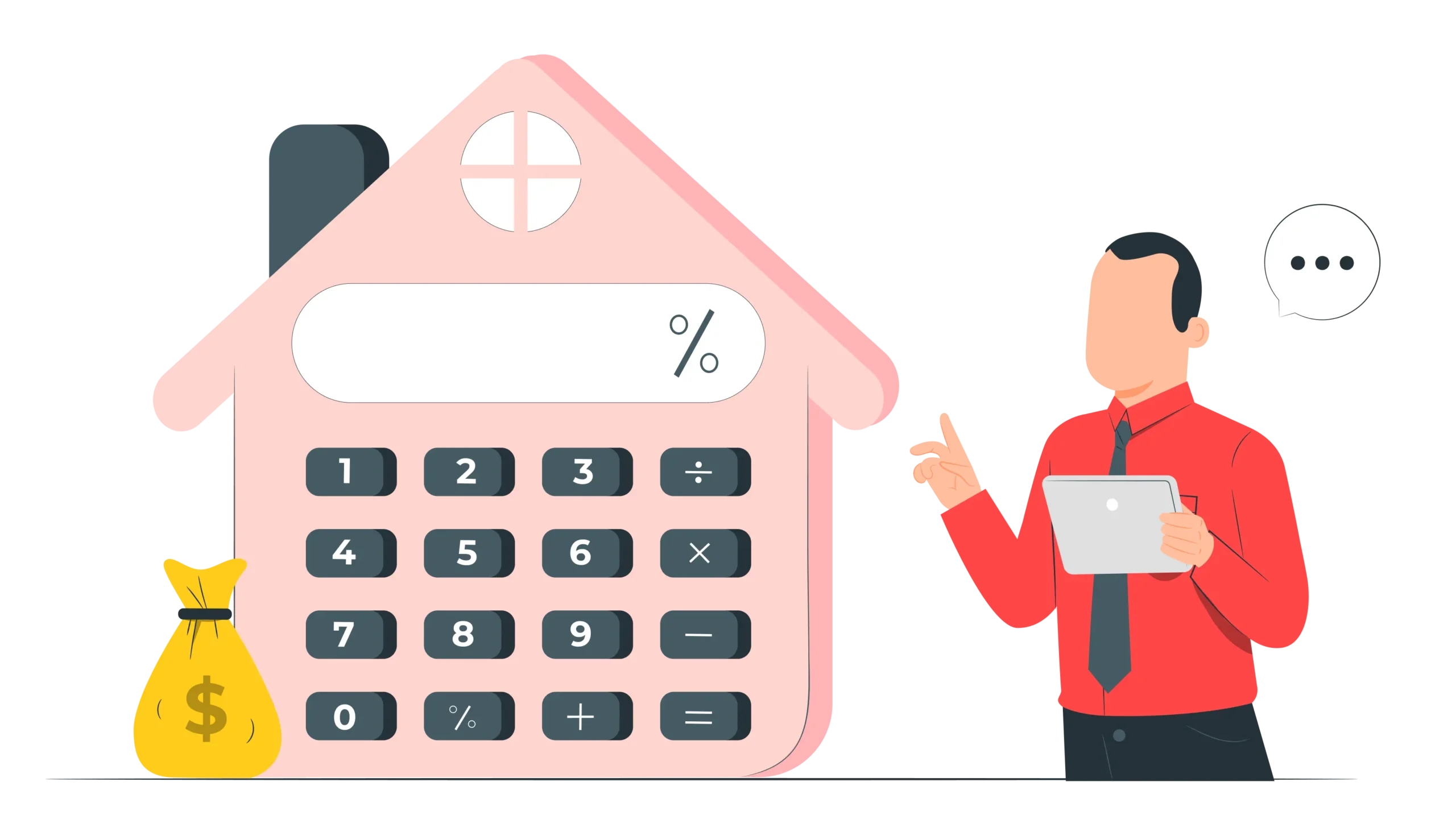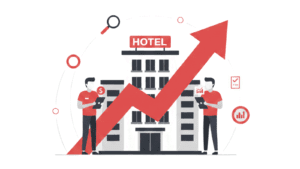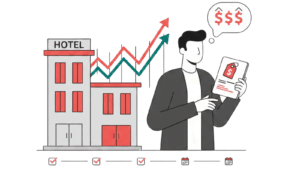Updated : Nov 11, 2025
Hotel pricing strategies can truly make or break your property’s profitability. In an industry that generates over $600 billion each year, even the smallest improvement in how you price your rooms can lead to substantial revenue gains. The most successful hotels don’t just set their rates and forget about them—they’re constantly evaluating and fine-tuning their pricing by keeping an eye on market trends, guest behaviors, and what the competition is doing. In this guide, you’ll discover practical frameworks to assess your current strategies, spot new opportunities for optimization, and harness the power of AI-driven, data-backed approaches to maximize both your occupancy and your revenue per available room.
Understanding Core Hotel Pricing Strategy Components
Here’s how it goes :
Demand-Based Pricing
First, you need to recognize that your hotel rooms are perishable inventory—once a night passes, you can’t sell it again. Demand-based pricing helps you stay flexible by adjusting room rates based on booking patterns, seasonality, and local events. This ensures you capture revenue when demand is high and stay competitive when it’s low.
With PriceLabs, you can customize pricing strategies based on room categories, demand patterns, and booking windows.

Revenue Management & AI
Revenue management is where things get really strategic. With modern AI-powered systems, you can analyze historical data, competitor rates, and even external factors like weather—all at once. These systems use predictive analytics to forecast demand and recommend optimal prices in real time, taking much of the guesswork out of your pricing decisions.
Market Segmentation
Not all guests are the same, and your pricing shouldn’t be either. By segmenting your market—think business travelers vs. family guests—you can tailor your pricing to match each group’s behavior.
For example, business guests may book last minute and care less about price, while leisure travelers plan ahead and are more price-sensitive.
Distribution Channel Management
Finally, managing your distribution channels is essential for profitability. Each channel, whether it’s direct bookings or OTAs, comes with different costs and commission rates. Keeping your pricing consistent while accounting for these differences helps you maximize profit across the board.
Understanding the Metrics That Matter
This is where you want to begin :
RevPAR: Your Profitability Pulse
Revenue per available room (RevPAR) is your go-to metric for evaluating how well your pricing strategy is working. By factoring in both occupancy and average daily rate, RevPAR gives you a real sense of your hotel’s overall revenue performance.
Pro Tip : Focusing on smart pricing—rather than just bumping up rates—helps you drive steady RevPAR growth.
ADR: Gauging Your Pricing Power
Average daily rate (ADR) tells you the average amount guests pay for a room. While it helps track your pricing strength, be cautious: a high ADR doesn’t always mean success if your occupancy drops.
Pro Tip: Use ADR alongside other metrics to ensure you’re not pricing yourself out of the market.
Occupancy Rate: Spotting Demand Trends
Monitoring your occupancy rate shows how in-demand your rooms are at current prices. On the flip side, low occupancy could signal that your prices aren’t matching guest expectations.
Pro Tip: If you’re consistently above 80%, there may be room to raise rates.
TRevPAR: Seeing the Full Revenue Picture
Total revenue per available room (TRevPAR) expands your view beyond just rooms—it includes income from food and beverage, parking, spa services, and more.
Pro Tip : Spot opportunities to boost overall guest spend, not just nightly rates, using TRevPAR
Competitive Rate Positioning: Staying Ahead in Your Market
Tracking how your rates stack up against competitors keeps you in the game. Regularly analyzing rate parity across channels ensures you’re not undercutting yourself and highlights where you can command higher rates thanks to better amenities or service.
Market Analysis and Competitive Intelligence
How to go about it?
Defining Your Competitive Set
Start by identifying hotels that truly compete with yours.
- Look at factors like location, star rating, amenities, and the types of guests you attract.
- Direct competitors are usually within a three-mile radius and serve similar guest segments.
- You’ll also want to keep an eye on aspirational competitors—those hotels you’d like to compete with as you elevate your own property’s positioning.
You can do this easily with PriceLabs Hotel Data Tab – Monitor the pricing of nearby hotel-style properties, analyze historical rate trends, and gain insights into market demand.

Leveraging AI for Competitive Intelligence
AI-powered rate shopping tools and market intelligence platforms are game changers. Why ?
- They give you instant access to competitor pricing, but don’t just stop at surface-level comparisons.
- Use these insights to spot patterns in competitors’ pricing, uncover their promotional tactics, and understand how they position themselves in the market.
- This deeper analysis can help you craft smarter pricing strategies for your own hotel.
Identifying Demand Generators
Take a close look at what drives demand in your area.
- Are you near an airport, convention center, or popular attraction? These locations often let you command premium rates during peak times.
- By understanding your local demand generators, you can anticipate high-occupancy periods and adjust your prices proactively.
Factoring in Seasonality and Cyclical Trends
It’s essential to recognize the seasonal and cyclical trends that affect your property.
- Beach hotels usually peak in summer, while business hotels might see more demand during weekdays or conference seasons.
- AI tools like Formula Bot or Competera can analyze historical booking data alongside future market insights to help you predict these patterns and optimize your pricing strategy.
Monitoring Local Events
Don’t underestimate the impact of local events on hotel demand.
- Conferences, concerts, sports tournaments, and festivals can all cause temporary spikes that justify higher rates.
- Successful hotels track event calendars closely—use technology to automate this process so you never miss an opportunity to maximize profit during these high-demand windows. You can uses tools like Cvent to be on the top of your game!
Demand Forecasting and Revenue Optimization
Let’s break this down to gain a deeper understanding:
Using AI for Accurate Demand Forecasting
To set the right prices, you first need to know how many guests to expect.
AI-powered forecasting tools analyze your historical booking data alongside current market trends—like local events or competitor moves—to give you a clearer picture of future demand. These systems can spot patterns and shifts that might be hard to see on your own, helping you anticipate busy periods and slow spells more accurately.
Tracking Booking Pace for Early Insights
Keep an eye on how quickly rooms are getting booked.
Booking pace analysis shows you whether reservations are picking up faster or slower than usual. If bookings are strong, you can confidently hold or even raise your rates. If things look sluggish, it’s a cue to consider special offers or targeted promotions to boost demand.
Optimizing Length of Stay Restrictions
During high-demand times, think about setting minimum stay requirements.
This strategy helps you avoid filling up with one-night bookings that could block out longer, more profitable stays. With AI systems, you can fine-tune these controls based on real-time booking trends, ensuring your rooms are always generating the best possible revenue.
Managing Overbooking with Care
A certain level of overbooking can actually increase profits
This is possible by accounting for last-minute cancellations or no-shows. But it’s a balancing act—AI forecasting helps you predict optimal overbooking levels so you minimize the risk of having to relocate guests, which can hurt your reputation and bottom line.
Embracing Dynamic Pricing Algorithms
Finally, let dynamic pricing work for you.
Modern algorithms adjust your room rates in real time based on demand signals, competitor pricing, and what’s happening in the market. This means your prices stay competitive every hour of the day, and you’re always maximizing revenue without constant manual intervention.
Here’s what happens when hotels switch to PriceLabs:

- Hotels using dynamic pricing see up to 18% higher RevPAR in their first year.
- Smart automation adjusts prices daily based on demand and competition.
- Stay ahead of the market with real-time competitor insights.
Technology Tools and Analytics Platforms
Some of these stand out for their effectiveness:
Revenue Management Systems (RMS)
Think of your RMS as the command center for your hotel’s pricing strategy. Modern RMS platforms—like PriceLabs—pull in data from sources such as your property management system, OTAs, and even competitors. This means you get accurate, up-to-date pricing recommendations that help you stay competitive and maximize profit.
Business Intelligence Dashboards
With business intelligence dashboards like Power BI, you can actually see how your strategies are performing. These dashboards visualize key metrics, spot trends, and highlight opportunities. Customizable reports make it easy for you and your team to understand what’s driving performance, so you can make smarter, data-driven decisions.
Automated Pricing Tools
Automated pricing tools are a game-changer for busy hotel owners and managers. They take the manual work out of the equation by applying complex pricing rules across all your booking channels at once. This not only saves time but also ensures consistency and reduces the risk of errors. With PriceLabs, you can:
- See what competitors are charging so you can price smarter.
- Automate rate updates based on demand, seasonality, and occupancy.
- Easily adjust prices in bulk across all units in seconds.
Predictive Analytics
AI-powered predictive analytics go one step further by helping you anticipate what’s coming next. These tools analyze historical data and market trends to forecast demand, suggest optimal pricing, and even simulate how different strategies might impact your revenue.
Integration Capabilities
Lastly, integration is key. When all your systems talk to each other—thanks to seamless integration—you have a single source of truth for all your pricing decisions. This makes it easier to get the most out of every tool in your tech stack while keeping things running smoothly behind the scenes.
Implementation Framework for Strategy Evaluation
Some practical steps to begin with :
Set Your Baseline Metrics
Before you can evaluate your pricing strategies, start by identifying key performance benchmarks tailored to your hotel’s unique market and operations. AI-powered analytics tools like PriceLabs can help you track metrics like RevPAR, ADR, and occupancy in real-time, giving you a clear sense of where you stand.
Establish Regular Review Cycles
Schedule monthly deep-dive reviews to assess long-term trends and shifts in the market, using AI to analyze competitor rates and guest demand patterns. Weekly check-ins let you make quick, tactical adjustments based on immediate data—think of this as fine-tuning your strategy with the latest insights.
Attribute Performance Accurately
To really understand what’s driving your results, use performance attribution analysis. Advanced AI platforms can help isolate the impact of specific pricing changes from other factors like marketing or seasonal fluctuations, so you know which strategies are actually moving the needle for your hotel.
Use Scenario Planning and Sensitivity Analysis
Leverage AI-driven scenario planning to model how different pricing strategies could play out under various market conditions. This proactive approach helps you prepare for shifts in demand, identify risks early, and spot new opportunities—so you’re never caught off guard.
Focus on Training and Change Management
Finally, ensure everyone on your team—from front desk staff to management—is aligned with your pricing strategy. Use regular training sessions and clear communication to build understanding and buy-in. When everyone knows the “why” behind your rates, you’ll see stronger, more consistent results across the board.
Common Pricing Strategy Pitfalls and Solutions
| Parameter | Pitfalls | Solutions |
| Data Reliance | Relying too heavily on historical data without factoring in real-time market changes | Leverage AI-driven analytics to monitor market trends and adjust pricing dynamically based on current conditions. |
| Pricing Consistency | Inconsistent pricing across distribution channels, leading to guest confusion and rate parity issues | Use channel management tools powered by AI to ensure rate consistency and avoid costly parity violations. |
| Total Guest Value | Focusing only on room rates and ignoring total guest value (spend on F&B, services, etc.) | Implement guest segmentation and use AI to analyze total guest value, not just room revenue. |
| Pricing Decisions | Making pricing decisions without competitive intelligence | Regularly conduct AI-assisted competitor benchmarking to inform your rate strategy. |
| Communication & Collaboration | Poor communication between departments (e.g., sales vs. revenue management) | Foster cross-department collaboration using centralized platforms that share real-time pricing data. |
| Performance Monitoring | Treating pricing evaluation as a one-time task instead of an ongoing process | Set up AI-driven performance monitoring for continuous strategy refinement and optimization. |
Wrapping Up
Evaluating your hotel’s pricing strategies isn’t just about crunching numbers—it’s about leveraging the power of AI and data-driven insights to maximize profit and stay ahead in a competitive market. As you move forward, focus on integrating smart AI tools that can analyze real-time demand, competitor rates, and guest behavior. This will help you make informed decisions and quickly adapt to market shifts. By embracing these innovative technologies and continuously fine-tuning your pricing approach, you’ll be well-positioned to increase revenue, boost occupancy, and deliver greater value to your guests.
FAQ
1. How can you determine if your current pricing strategy is actually maximizing your hotel’s profit?
You can evaluate your pricing strategy by regularly reviewing your revenue reports, comparing them with your competitors’ rates, and analyzing guest booking patterns. Using tools like revenue management systems can help you spot opportunities to adjust prices and boost profitability.
2. What key factors should you consider before changing your hotel’s pricing approach?
Before making any changes, think about your hotel’s location, target market, seasonality, and local demand trends. Also, consider how your competitors are pricing similar rooms and what value-added services you offer that set you apart.








